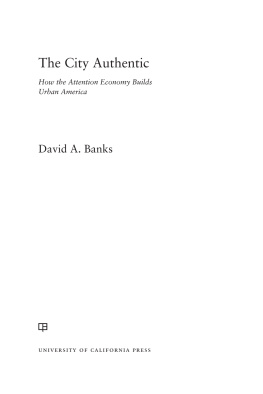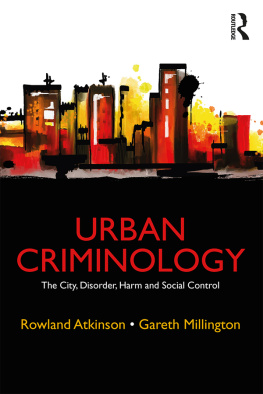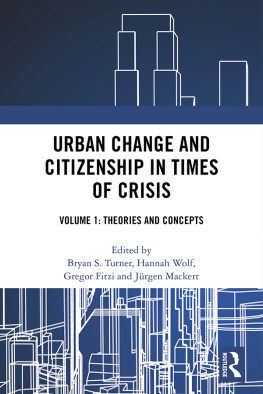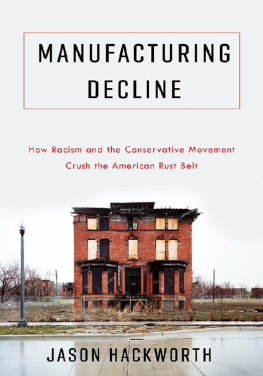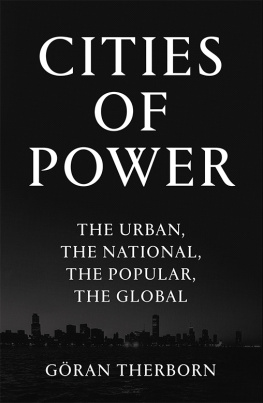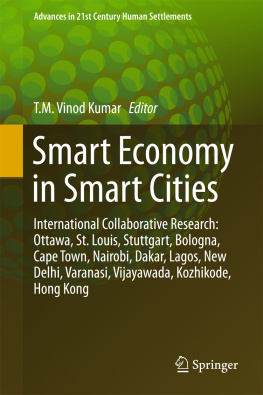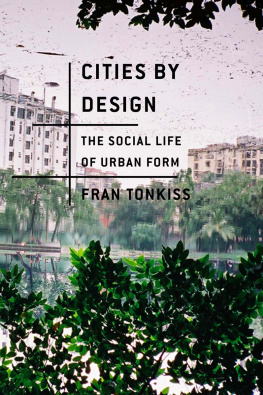Acknowledgments
It takes a village to write a book. Thanks go to Ava Kofman for starting this journey by demystifying some of the process. I also want to thank my students in History and Philosophy of Planning for reading my initial proposal: Andris, Snehal, Katherine, Derek, Zachary, Nora, Aleesha, Emily, Daniel, Ikenna, Jesse, Mark, Gopika, Prachi, Andrew, Nicholas, and Ben. I hope I demystified something by doing that.
Enormous thanks to Niels Hooper, whose email came as if from heaven when I was getting rejections from all sides. He took a risk on my project, and Ill be forever grateful to him. Also to Robin Manley, who shepherded the proposal to acceptance as one of his last acts at UC Press before starting what I expect will be a fulfilling academic career of his own. And of course Michelle Lipinski, who picked up the project once it was accepted, and pinch hitter Enrique Ochoa-Kaup for knocking it out of the park. LeKeisha, Barbara, and everyone else who worked on this, thank you so much.
Theres a community of thinkers and writers who have done so much to help me find my voice as a writer and hone my ideas: Nathan Jurgenson, Alexandra Molotkow, Rob Horning, Soraya King, Jenny Davis, PJ Patella-Rey, Jeremy Antley, Stephanie Monohan, and everyone else at Cyborgology , Theorizing the Web, and Real Life Magazine .
Theres also this beautiful community of friends and comrades that Ive been honored to fight, love, hope, and drink with: Sean Collins, Ashley Saupp, Adam Pelletier, Jenn Baumstein, David Previtali, Dan Lyles, Colin Donnaruma, Chris Scully, Emily Robertson, and too many more to list here.
Thank you Zo Mabry for a lifetime of art: on our childhood books, my walls, my arm, and now my first (grown up) book.
I was blessed with twice the average amount of parents: Connie, Kevin, Roni, and Russell, you gave me life and then taught me what to do with it. Feln, Rachel, and Ian (wherever you are) love you.
But most of all Britney Gil, the love of my life and always the first set of eyes on anything I write. I could fill another book describing all the ways you helped me but then Id really be over the word limit so just: thank you.
Abbreviations
ACE | Upstate Alliance for the Creative Economy |
BID | Business Improvement District |
CDRPC | Capital District Regional Planning Commission |
CEG | Center for Economic Growth |
CREDC | Capital Region Economic Development Council |
EDC | Economic Development Council |
IDA | Industrial Development Agency/Authority |
PILOT | Payment in Lieu of Taxes |
PART ONE
Making the City Authentic
CHAPTER 1
Cultural Capital Region
One late afternoon, a few days before Christmas, I was sitting at my kitchen table absentmindedly eating cereal and scrolling through Instagram. I saw the usual fare of earnest bathroom selfies and moody party photos. Between a tastefully arranged bouquet of wildflowers and a dog in a Santa suit was an ad that caught my eye. Figure 1 is a screenshot.
FIGURE 1. An Instagram ad for Fulton County, New York.
At first, I thought the photo was taken in Troy, where I live, but I quickly realized that neither a three-story brick building nor a church is all that rare. Even though I think of them as unique relics of a bygone era, the reality is that the quirky neighborhoods of today were the alienating, uniform industrial hellscapes of the last century. These buildings could be almost anywhere in North America.
Anywhere, as it turned out, was forty-five minutes northwest in Fulton County, where the Fulton County Industrial Development Agency and the Fulton County Center for Regional Growth were advertising
industrial properties now available in popular towns, such as Gloversville, Johnstown, and Broadalbin, that can be customized to fit your business like a glove. Space is available in historic, grand buildings that feature distinctive architecture, 100 year old brick, and hardwood floors, surrounded by plentiful and free parking. If you need more room, space is now available in mixed-use, multi-story structures, former manufacturing facilities, and textile plants.
The ad for three towns listed in rapid succession followed by the adjective-gilded amenities sounded like it was lifted straight from the sales pitch of Lyle Lanley, the fast-talking salesman that came to Springfield to sell a genuine, bona fide, electrified six car monorail. A con artist like Lyle Lanley, based closely on Harold Hill from the play (1957) and later hit movie (1962) The Music Man , is a familiar figure in times of transition. Whether its the Eisenhower fifties giving way to the psychedelic sixties, or whatever it is we are living through today, con artistry thrives in uncertain times.
The Simpsons Marge vs. the Monorail and The Music Man are rehashes of an ancient story about the outsider who acts as a foil to a sympathetic, but fallible community. Its a story that gives us an opportunity to ruminate on our definitions of good communities and what they need. We get a chance to exercise our suspicion of both salesmen and our own desire. Lanley convinces Springfield to buy the monorail by tapping into their fear of being left behind with a threat to take it next door to Shelbyville. The marching band that Harold Hill was selling the fine people of River City, Iowa, in The Music Man was meant to save them from the moral panic he had manufactured around the introduction of a new pool table at the local tavern.
These panic-inducing stories of modernityfading into obscurity or descending into modern depravitystill work. Trumps promises of a border wall deftly used both: a one-two punch of losing in a global economy and stemming the supposed tide of rapists and murders. City and county officials across the Rust Belt are realizing, just like Trump, that nostalgia for an idealized past and the desire for a dignified future, are a powerful sales strategy.

